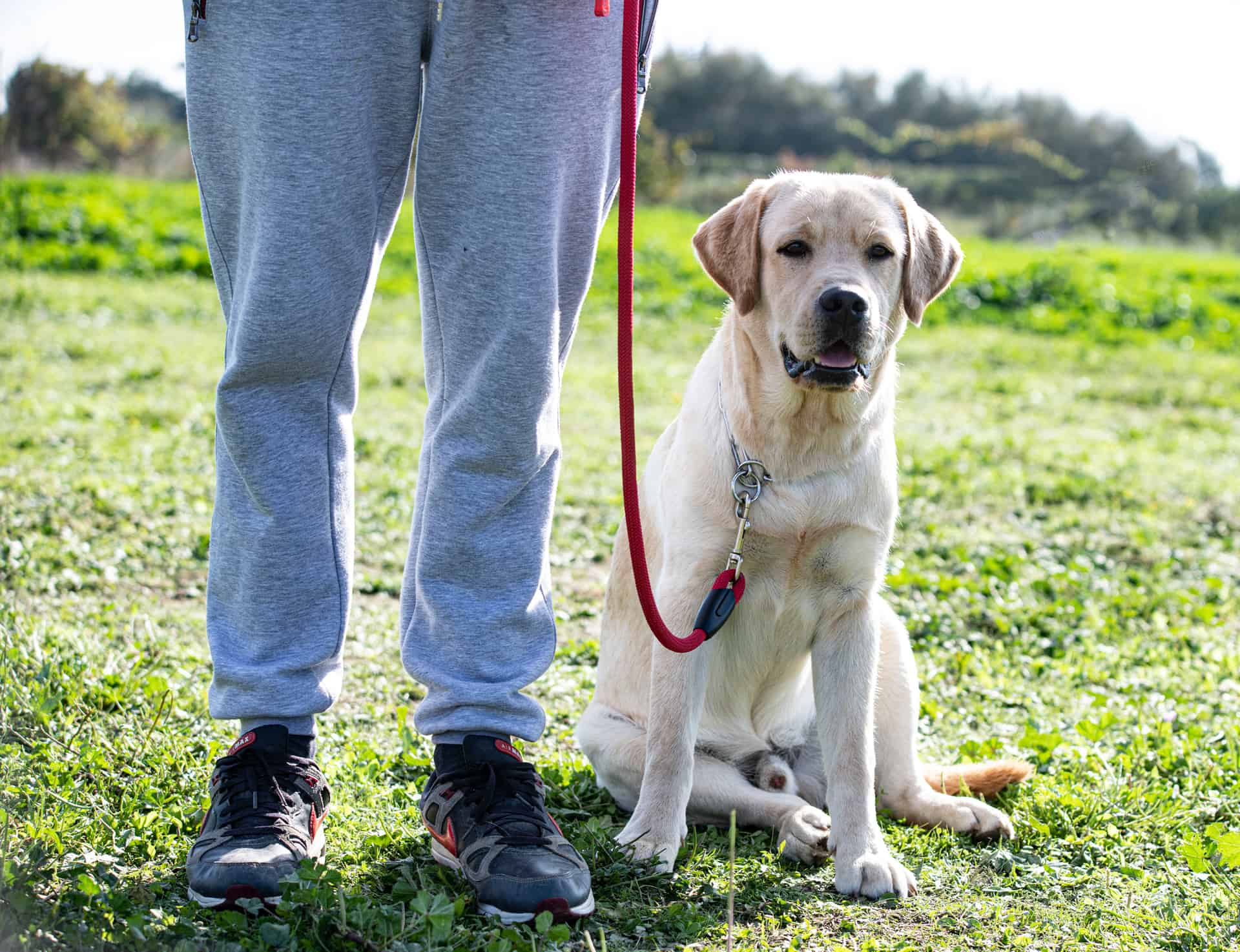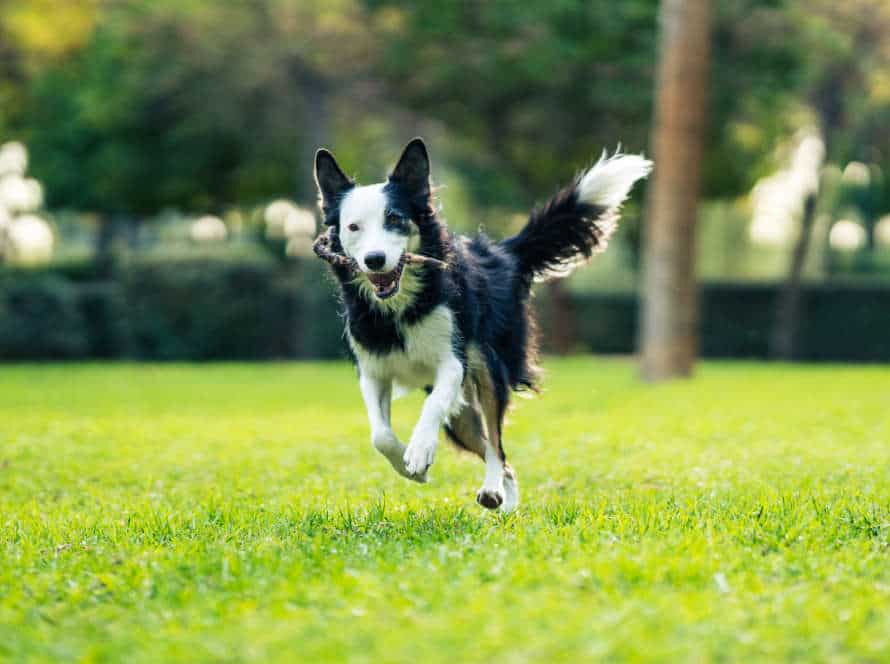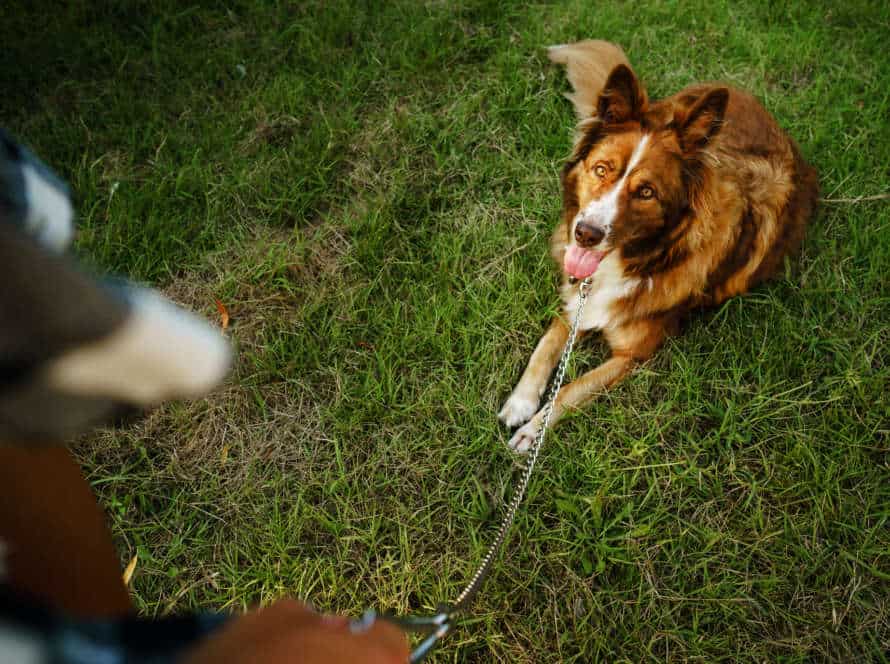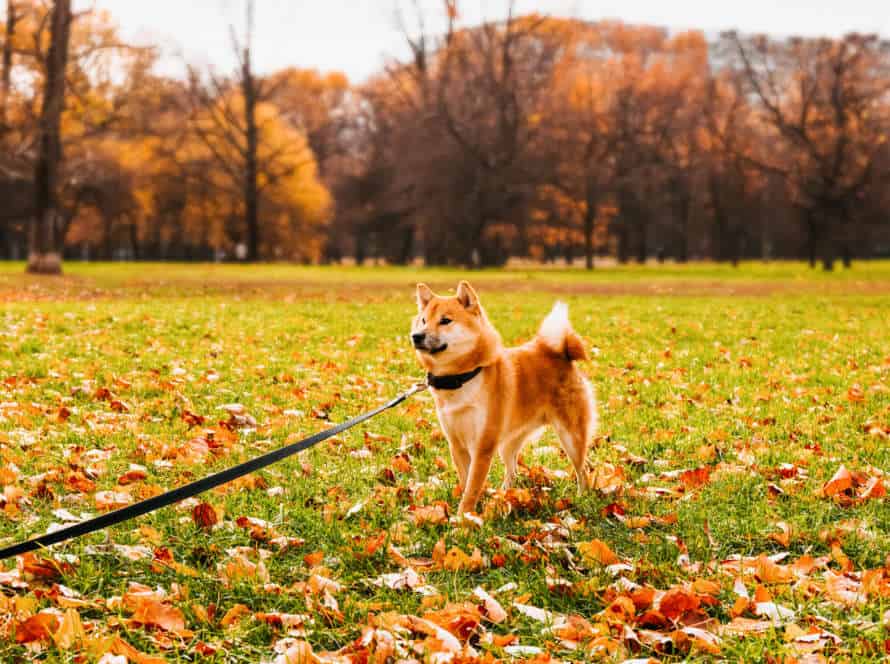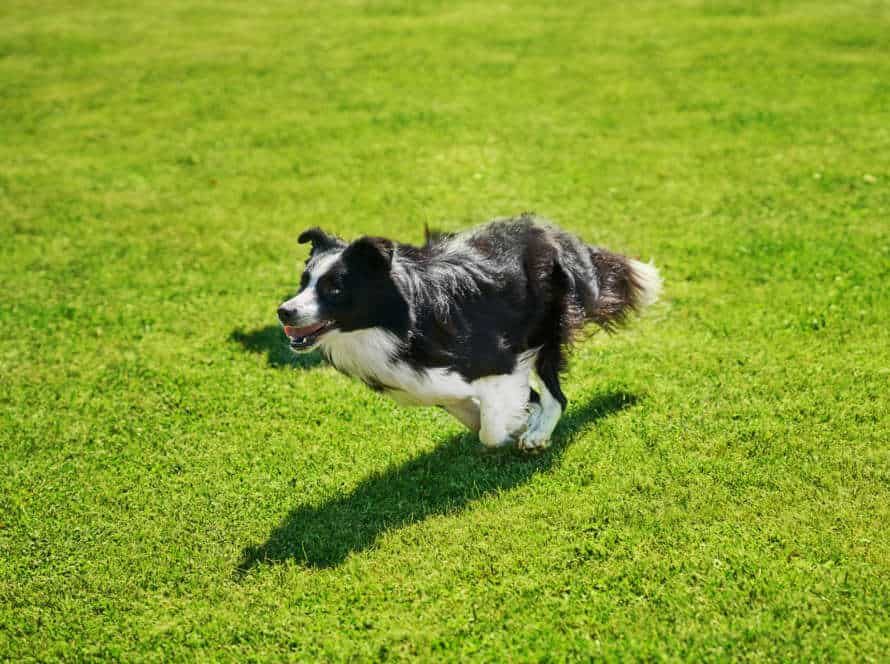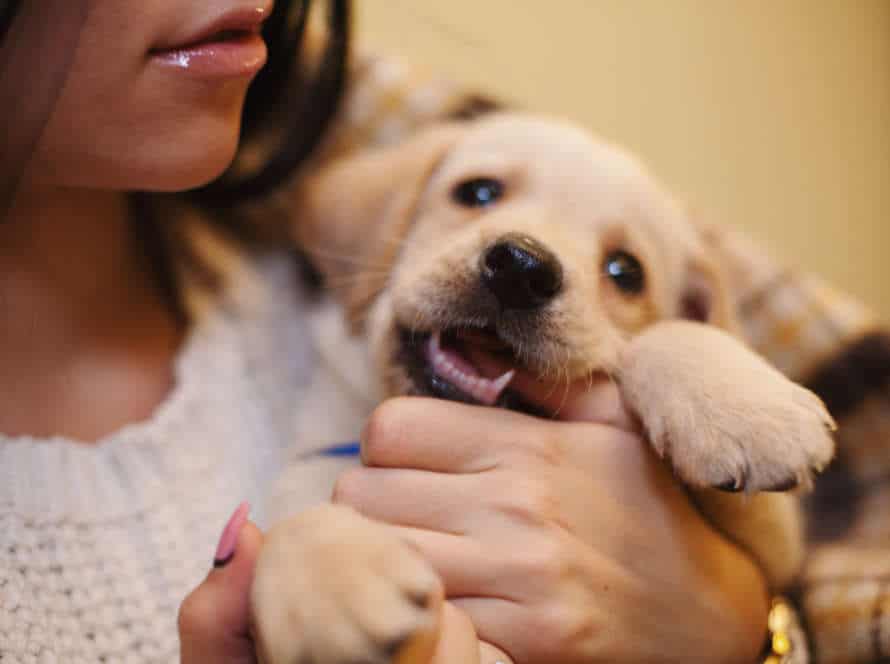Addressing Leash Pulling: Tips and Techniques for Success
Leash-pulling is a problem that many dog owners face. To address it, you need patience, consistency and a good plan. Here are some tips:
- Choose a leash and collar that fit your pup’s size, breed and walking style.
- Teach your pup basic commands such as “heel,” “sit,” and “stay.”
- Use positive reinforcement like treats, toys or praise to reward calm behavior.
- Don’t use punishment, aggression or force.
- Be consistent and set aside daily time to practice and reinforce.
- Remember: Training takes patience and consistency from you, the owner.
Understanding why dogs pull on the leash
Leash pulling is a tricky thing. It happens when dogs are on walks, and it can be annoying for both the pup and its owner. To fix this problem, one must first learn why the dog pulls. Here are some reasons why a pooch may pull on the leash:
Common reasons for leash pulling
Leash pulling is a common issue for dog owners. It can be due to a lack of training or improper handling. Here are some causes:
- Lack of training. Dogs not trained on leashes may pull due to lack of context.
- Rewarding bad behavior. If you let your dog pull to get what they want, they’ll learn it works.
- Excitement. Dogs may pull if they’re excited to go out or to explore something.
- Fear. They may pull away from something they’re scared of.
- Health issues. Joint pain or discomfort can lead to leash pulling.
To stop leash pulling, first figure out why it’s happening. Tips and techniques like positive reinforcement, leash training exercises, and using the right equipment can help.
Understanding your dog’s behavior and body language
Dogs tugging the leash is a common occurrence, yet it can be highly exasperating for their owners. To comprehend why canines pull, you must interpret their behavior and body language.
Here are some tips that may help:
- Dogs might tug the leash to investigate their atmosphere or because they are excited to go somewhere.
- Consistent training and rewarding good behavior can aid in leash pulling.
- Methods such as changing directions and stopping can also assist in discouraging tugging.
- If your pup carries on to yank the leash, think about using a front-clip harness or employing the help of a doggy coach.
- A well-exercised pup and appropriate training can create a pleasing and stress-free walk for both you and your canine companion.
Creating a positive training environment
When training a dog to stop leash pulling, a positive environment is essential. Here are some tips for success:
- Set boundaries and stay consistent.
- Make sure your pup is comfy and relaxed.
- Reward good behavior with goodies or words of praise.
- Skip punishment and negative reinforcement tactics.
- Be patient and consistent.
By creating a positive training atmosphere, you can address leash pulling and build a strong connection with your pup.
Techniques for Preventing Leash Pulling
Leash pulling is a common issue for many pooch proprietors. It can be chaotic, awkward, and exhausting for both pup and proprietor. Fortunately, there are many techniques and hints that can help with diminishing and disposing of leash-pulling. With tolerance and consistency, you can become an expert in avoiding leash pulling! Let’s look at the details.
Positive Reinforcement Training Methods
Positive reinforcement training is an amazing way to train your pup! Yay!
To stop leash-pulling, try these tips:
- Reward your dog with treats and praise when they walk nicely.
- When your pup pulls, stop moving and only resume when they stop.
- Teach commands like “heel” and “stay” to reinforce good leash manners.
- Use a clicker or similar training tool to get your pup to focus on you.
This type of training will not only stop leash-pulling but also create a beautiful bond between you and your furry friend!
Use of no-pull harnesses and head collars
No-pull harnesses and head collars are great tools to stop leash-pulling in dogs. Traditional collars can hurt your pup’s neck and make the pulling behavior worse. No-pull harnesses use pressure on the chest to discourage pulling, while head collars use gentle guidance to redirect your dog’s focus.
When using these tools, it’s vital to remember these tips:
- Choose a harness or head collar that fits your pup properly, so they don’t feel uncomfortable.
- Introduce the tool gradually, with short sessions, being gentle and rewarding them with treats.
- Use positive reinforcement techniques to help your pup walk calmly without pulling. Praise good behavior and redirect them when they start to pull.
- Consistency is key – use the tool every time you walk your pup so they learn the right behavior. Using one of these tools can help you train your pup, but it doesn’t replace proper training.
Teaching “heel” command and leash manners
Teaching your pup the “heel” command and proper leash etiquette can make a big difference for dog owners dealing with leash pulling. Get success with these tips:
- Create a strong relationship with your pup through consistent training and positive reinforcement.
- Practice the “heel” command in low-distraction areas like your backyard or a quiet park.
- Lure your pup close with a reward such as a treat or toy.
- Gradually add new distractions like other dogs, people and noises as your pup progresses.
- If pup starts pulling, stop walking and wait until they calm down before continuing.
- Try a front-clip harness or head collar to stop pulling and have more control.
With patience and consistency, you and pup can have a relaxed and enjoyable walk together.
Pro tip: Regular exercise, mental stimulation and socialization can also help reduce leash pulling.
Training Tips and Exercises
Teaching your pup not to tug on the leash will take lots of patience and regular practice. Be mindful that each dog has its own character and needs. Thus, there are some tips and workouts to tackle leash pulling and boost good behaviors. Let’s investigate them!
Regular leash training practice
Leash training is a must for pet owners who want to tackle leash pulling and teach their pup better behavior and obedience. So, here are some tips to help you be successful:
- Use treats and praise to reward your dog when they’re behaving and discourage pulling.
- Start in a quiet, low-distraction area.
- Keep leashes short, and don’t let them out fully to have more control.
- Changing directions can help prevent pulling and remind them you’re the leader.
- Practice commands like “sit and stay” and “heel” to reinforce attentiveness.
Remember, regular and consistent practice is the key to success. Plus, stay patient and give your dog time to learn and adjust.
Incorporating distractions into training exercises
To teach your pooch not to pull on the leash, incorporating distractions into training exercises is key. So, to do this:
- Go for a walk on busy streets or crowded parks.
- Pass other dogs, people, and objects that may attract your dog’s attention.
- Reward your pup with treats and positive reinforcement if they focus on you.
- Gradually increase the level of distractions as your pup becomes better at following commands.
One more thing: Be patient and consistent with the training process.
Adjusting training techniques to suit your dog’s personality and behavior
Every pup has its own character and habits that need special training methods to get the best outcome. If your dog tends to pull on the leash, there are several tricks and techniques that you can alter according to its personality.
For instance, if it is easily distracted, use a shorter leash or attach a no-pull harness to help it concentrate. If it is more reactive, start the instruction in a calm, low-stimulus area and increase the difficulty as it progresses.
Furthermore, reward-based techniques like treats and compliments are great for dogs that react well to rewards. Be patient, maintain consistency, and adjust your teaching strategies to match your pup’s character and behavior.
Tip: Knowing your dog’s personality and behavior will also bring you closer together beyond training sessions.
Troubleshooting Leash Pulling problems
Leash-pulling is a common challenge for pup-owners. Frustrating and hard to tackle, but don’t worry! We have tips to help. Boredom, not enough exercise, or just excitement – whatever the reason, there are solutions. Let’s explore the tips and techniques to reduce leash-pulling.
Identifying and addressing underlying behavioral problems
Leash pulling is an issue with some doggies during walks. To tackle it, identify and address the root cause. Here are some tips:
- Identify why they pull: Fear? Anxiety? Overstimulation?
- Use positive reinforcement: Reward good behavior and redirect bad behavior.
- Get the right gear: A comfy harness and a non-retractable leash will give you more control.
- Be consistent: Same commands and techniques each time when out.
- Give ’em free time: Let your pup sniff and explore; it’ll help burn off energy and reduce pulling.
To stop leash pulling, address underlying behavioral problems, use positive reinforcement, have the right equipment, be consistent, and give your dog free time.
Seeking professional help from a dog trainer or behaviorist
If your pup is having leash-pulling problems, looking to a professional trainer or behaviorist for help is a great idea! They have the know-how and skills to detect what’s causing your dog’s misbehavior and can put together tailored strategies to help you and your pup. Here are tips for getting the most out of working with a trainer or behaviorist:
- Find one who’s certified and has a good track record.
- Schedule a consultation to discuss your pup’s behavior and pick the best training option.
- Be frank about your pup’s behavior and any former training or medication they have had.
- Work with the trainer or behaviorist to set realistic goals and expectations.
- Practice consistency when it comes to the training strategies recommended.
- Pro Tip: Don’t give up – with the help of a professional, your pup’s leash-pulling problems can be solved in no time!
Other solutions for addressing leash pulling, such as walking routes and time of day
Leash pulling is a frequent problem for dogs and can make walking them a difficult experience. Training them is the best solution, yet there are other tips that can help. Here are some to consider:
- Walking routes: Pick peaceful residential areas instead of busy streets with many distractions like squirrels and other animals.
- Time of day: Go for a walk in the early morning or late evening when there are less people and animals.
- Positive reinforcement: Use treats and verbal praise for when your dog walks calmly on the leash.
- Be consistent and keep training sessions short and often for better results.
Frequently Asked Questions
1. Why does my dog pull on the leash?
Dogs pull on the leash for a variety of reasons, such as excitement, fear, or a lack of training. They may also be trying to escape from something or following their instincts to explore.
2. How can I teach my dog to stop pulling on the leash?
One effective method is to use positive reinforcement techniques, such as rewarding your dog for walking calmly on a loose leash. You can also try using a front-clip harness or head halter, which can help redirect your dog’s attention and reduce pulling.
3. Should I use a choke chain or prong collar to control leash pulling?
No, these types of collars can actually cause harm to your dog and may make the problem worse. Instead, use a harness or head halter that allows you to safely control your dog’s movements without causing pain or discomfort.
4. Can leash pulling be a sign of aggression in dogs?
While leash pulling is often a behavioral issue, it can sometimes be a sign of underlying aggression or anxiety in certain dogs. If your dog is displaying signs of aggression or excessive fear, it may be helpful to work with a professional trainer or behaviorist to address these issues.
5. How long does it take to train a dog to stop pulling on the leash?
The amount of time it takes to train a dog to stop pulling on the leash can vary depending on the individual animal and the training methods used. Some dogs may see improvement in just a few sessions, while others may require more consistent training over several weeks or months.
6. Are there any tools or techniques that should be avoided when trying to control leash pulling?
Yes, it’s important to avoid any tools or techniques that may cause pain or discomfort to your dog, such as choke chains, prong collars, or physical punishment. Instead, focus on positive reinforcement techniques that reward good behavior and encourage your dog to learn without fear or stress.

